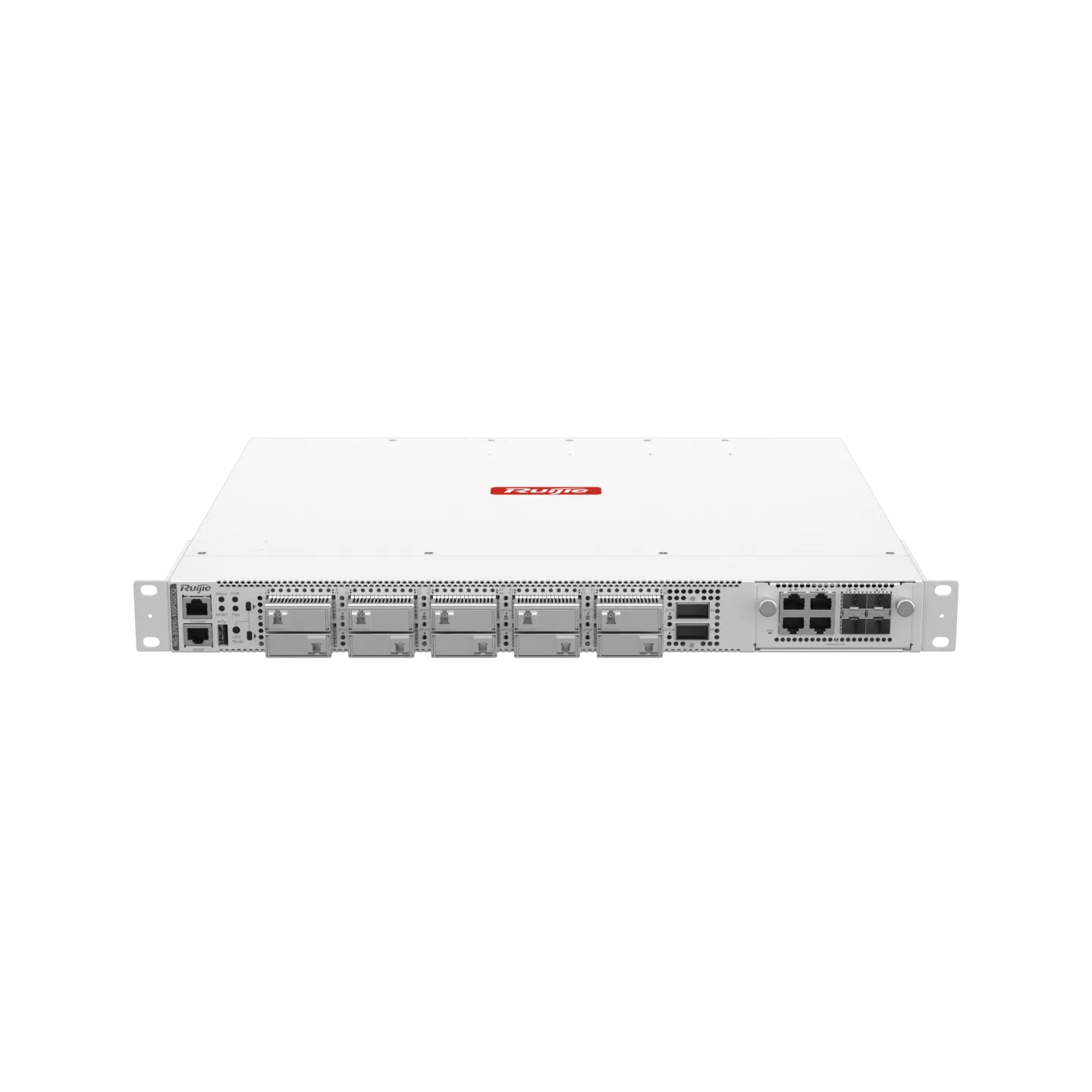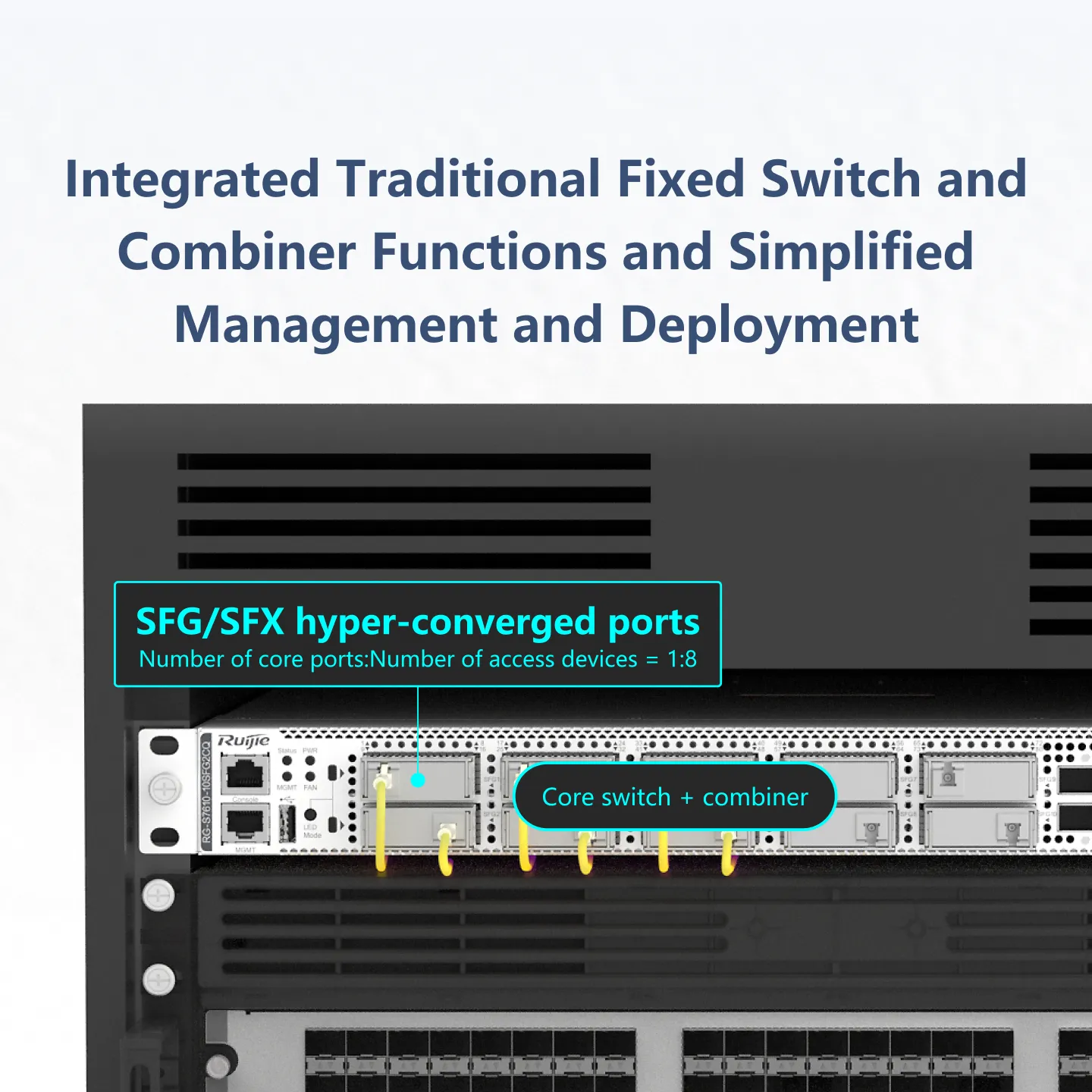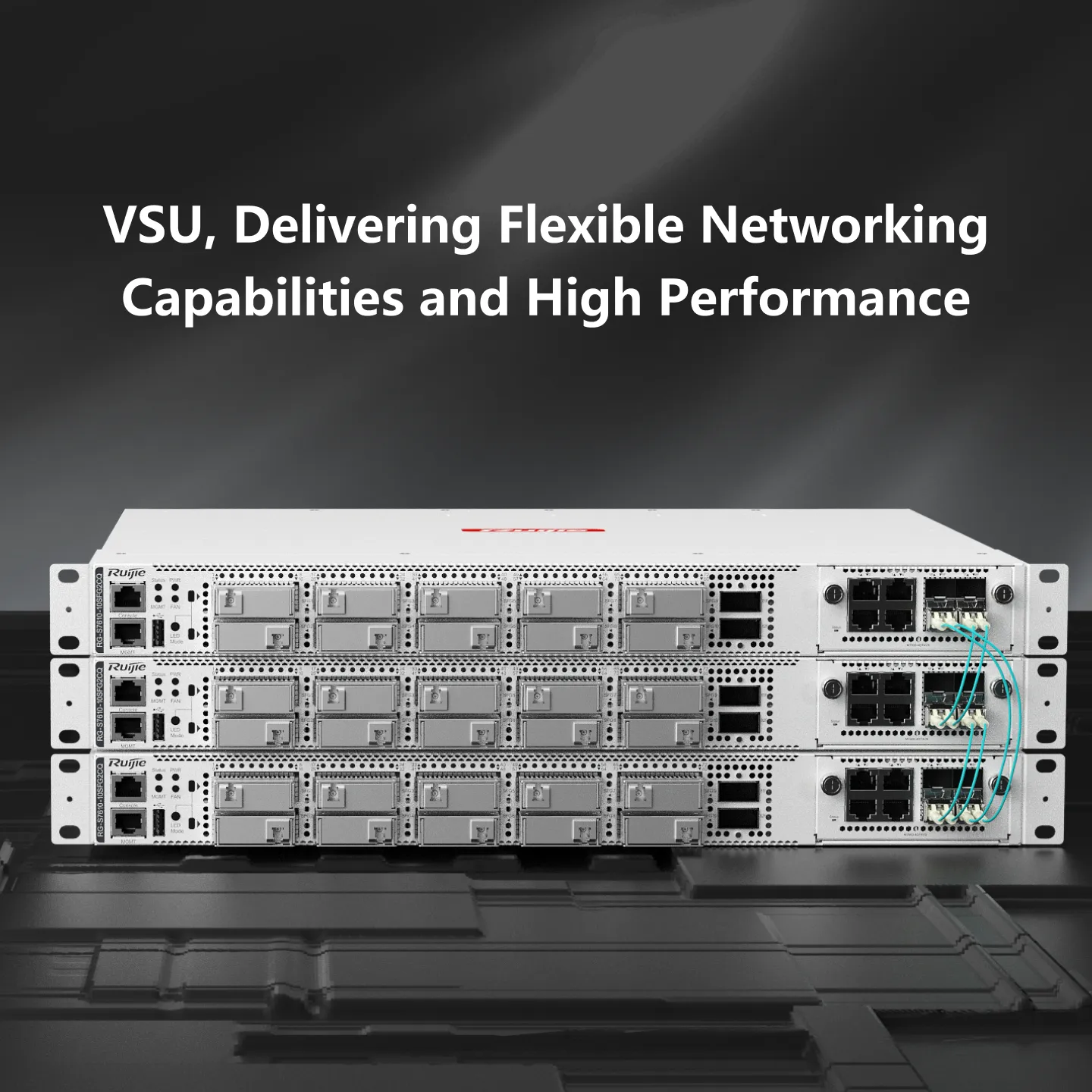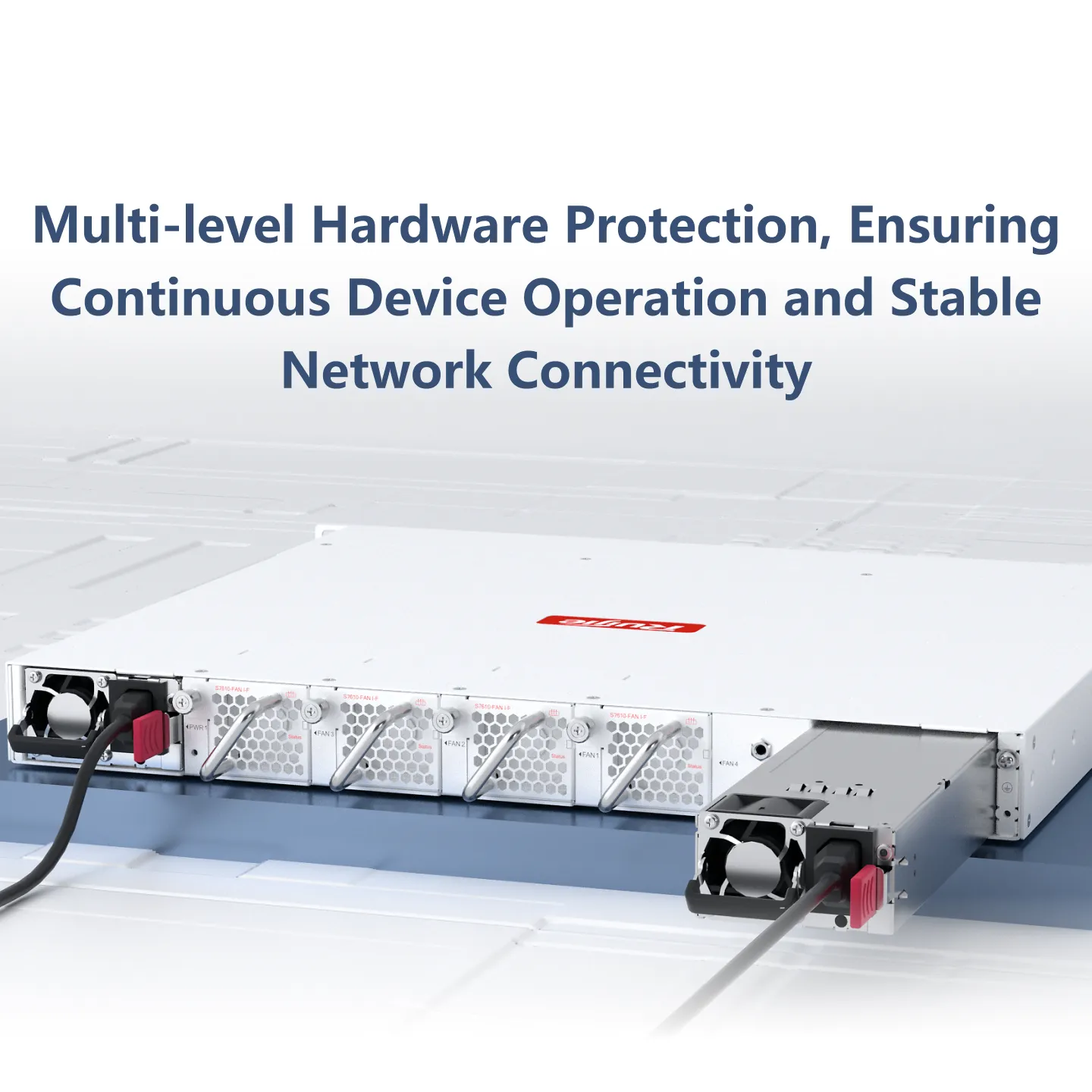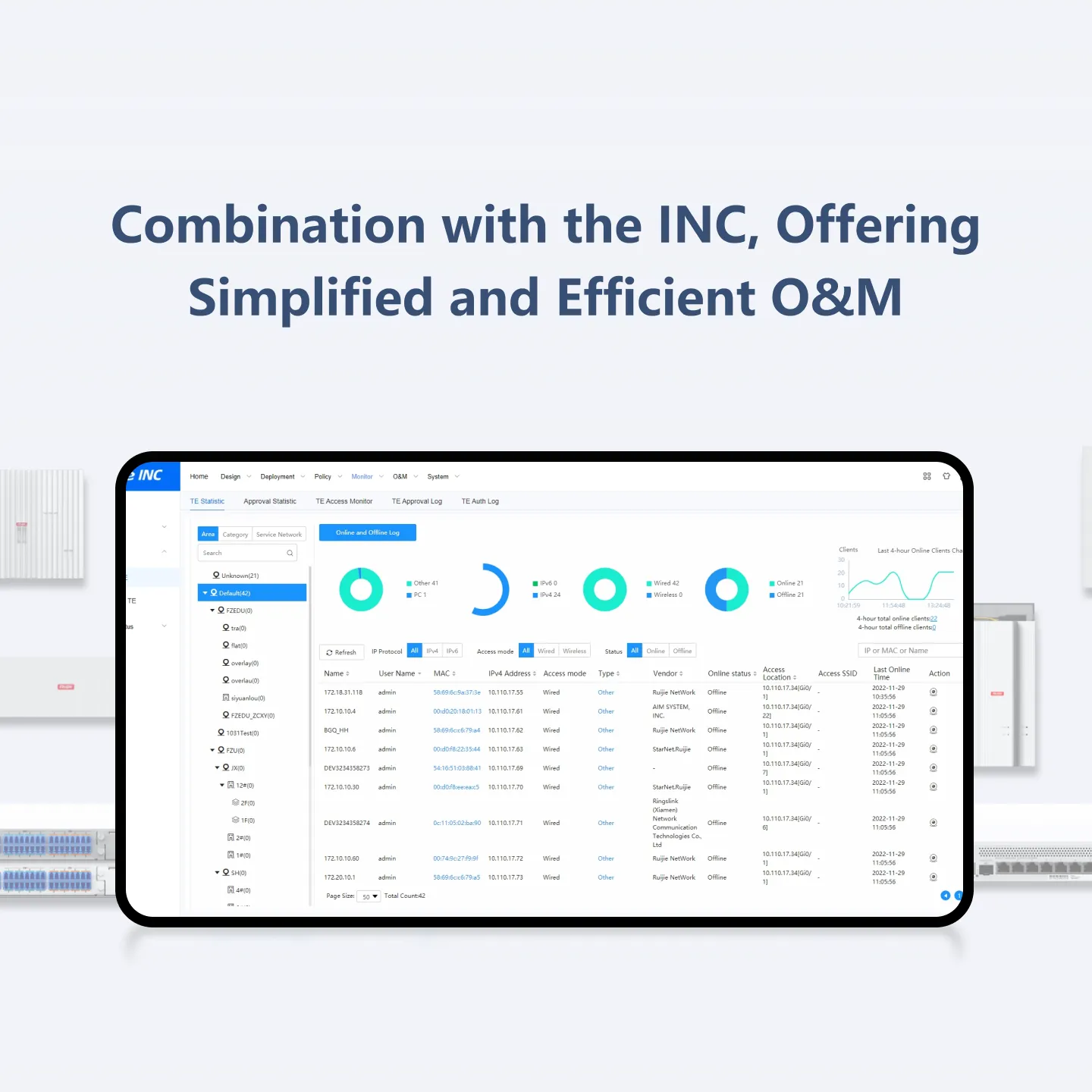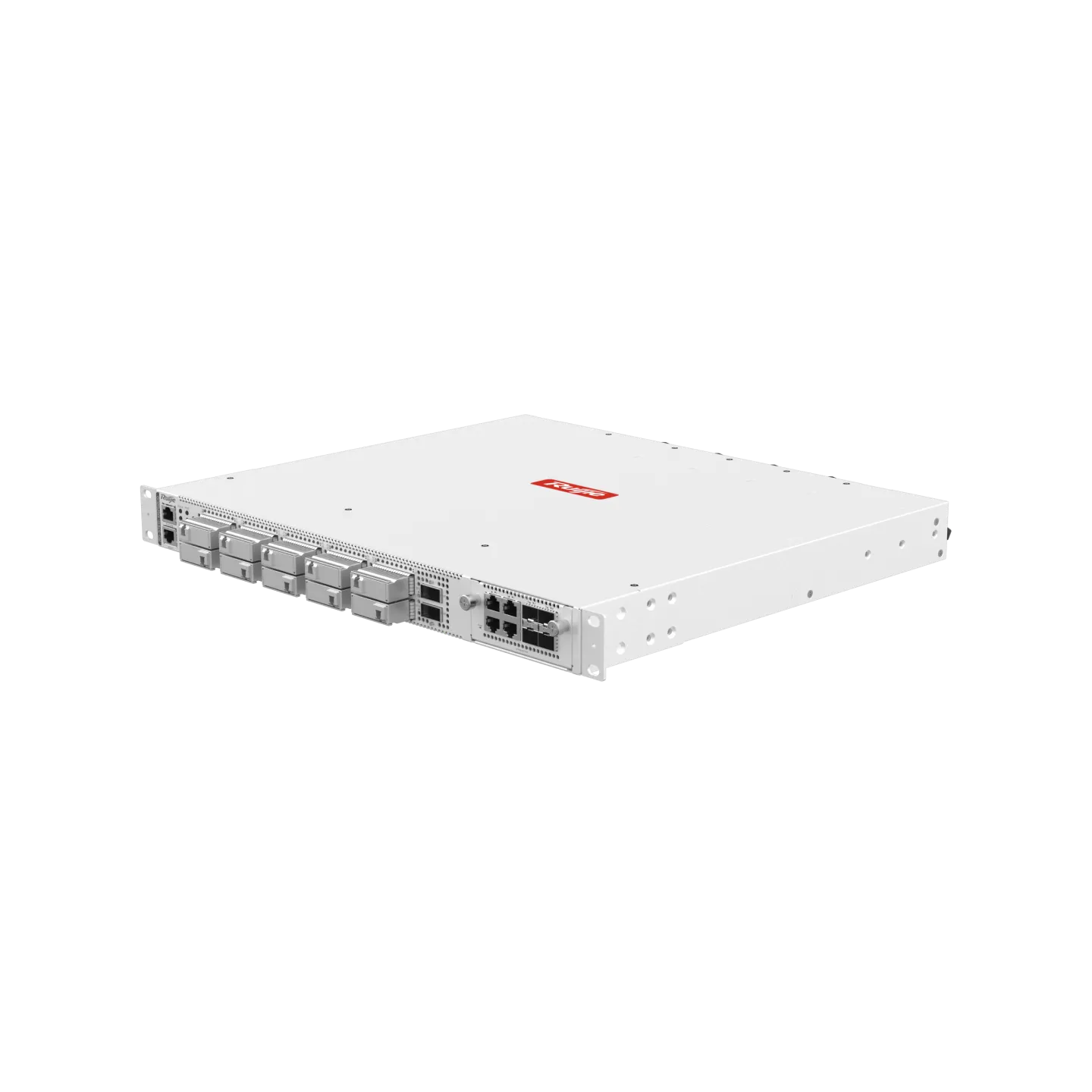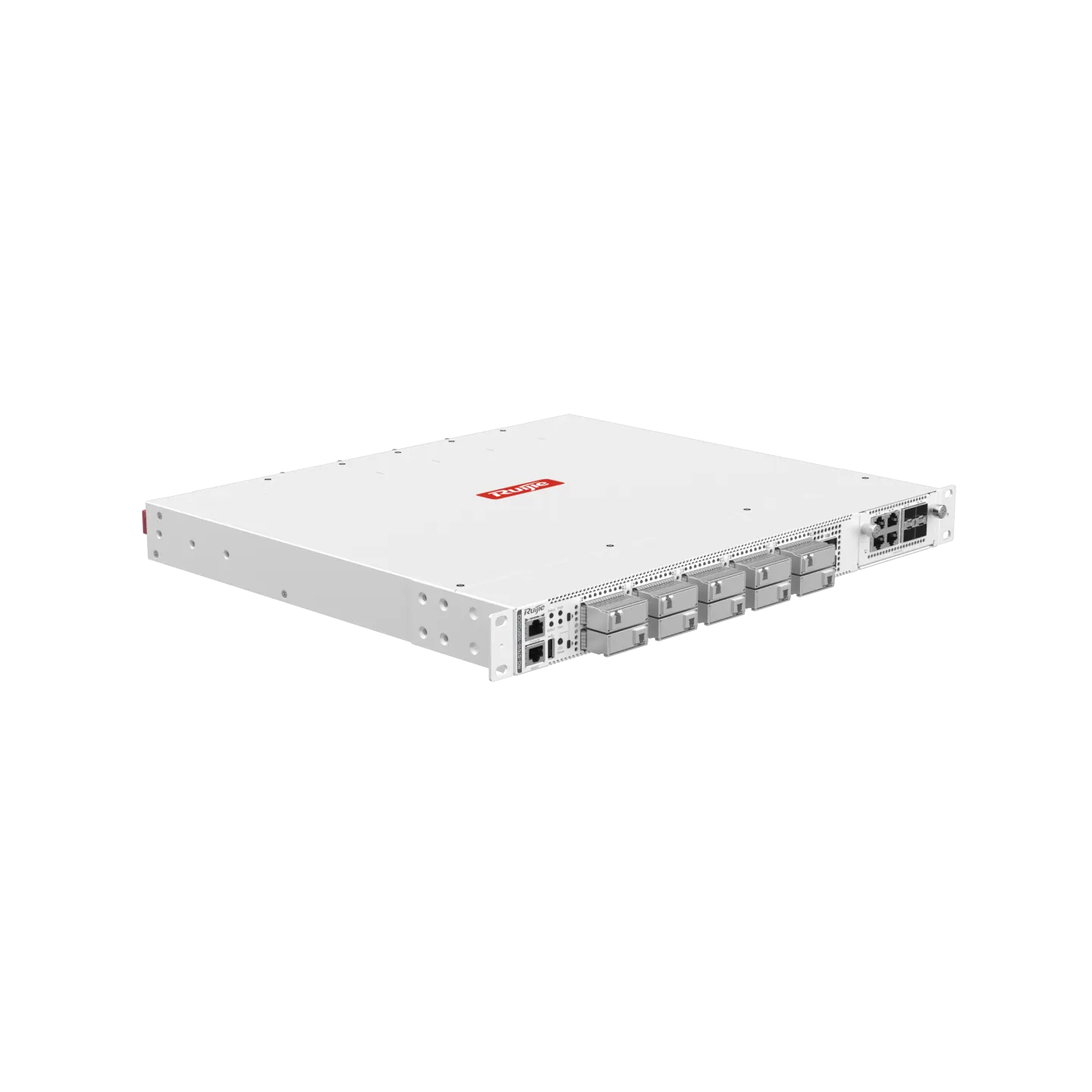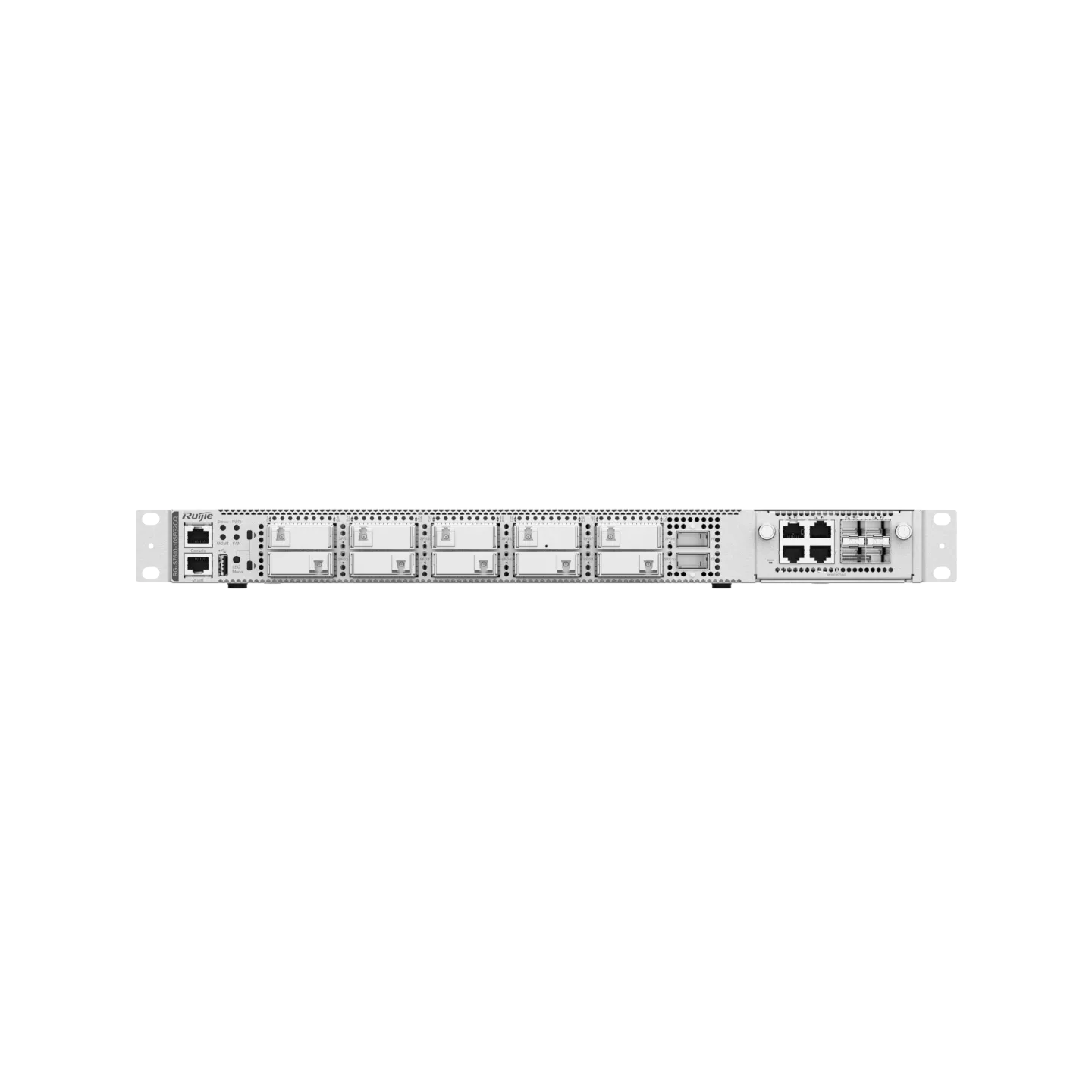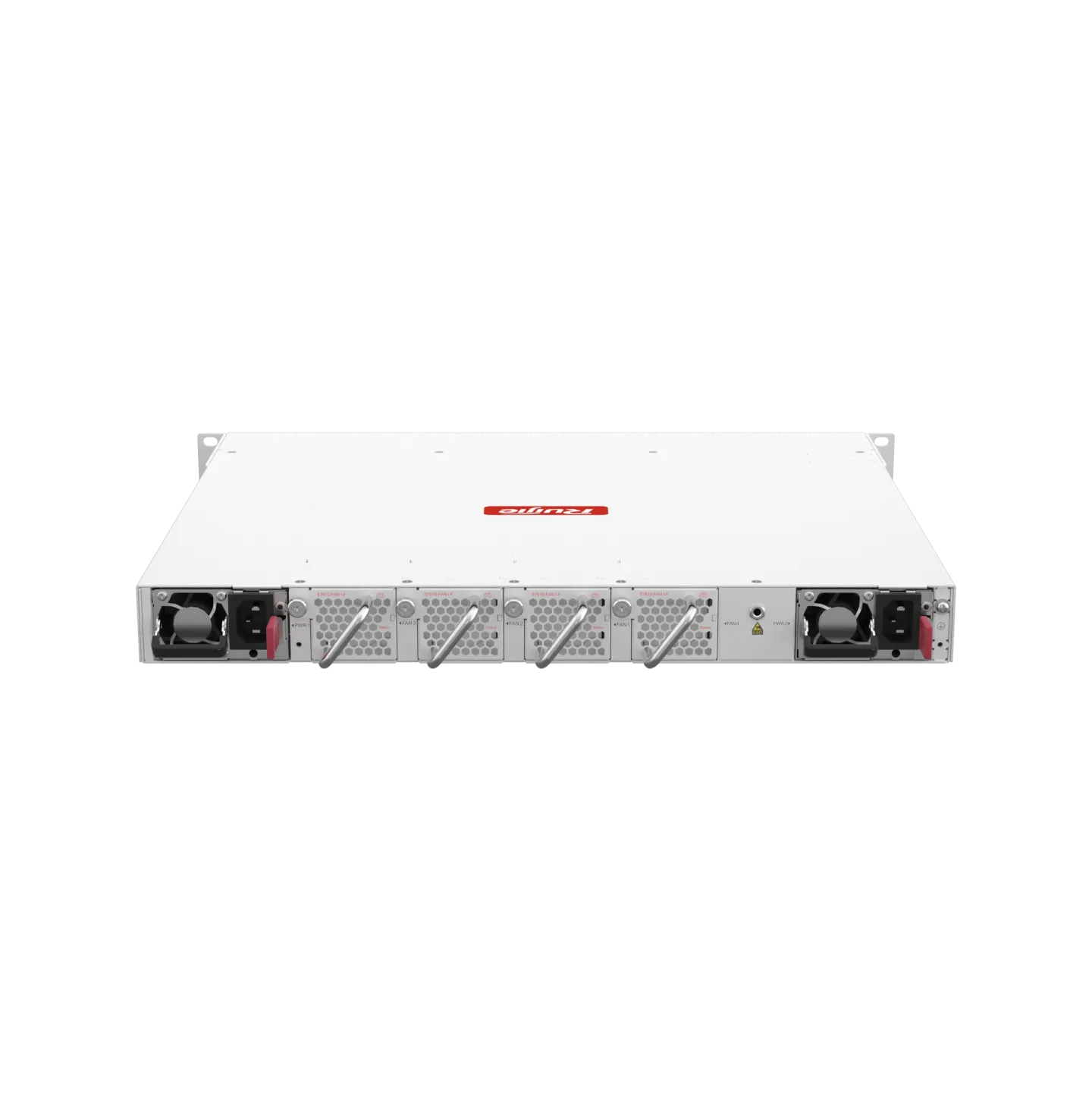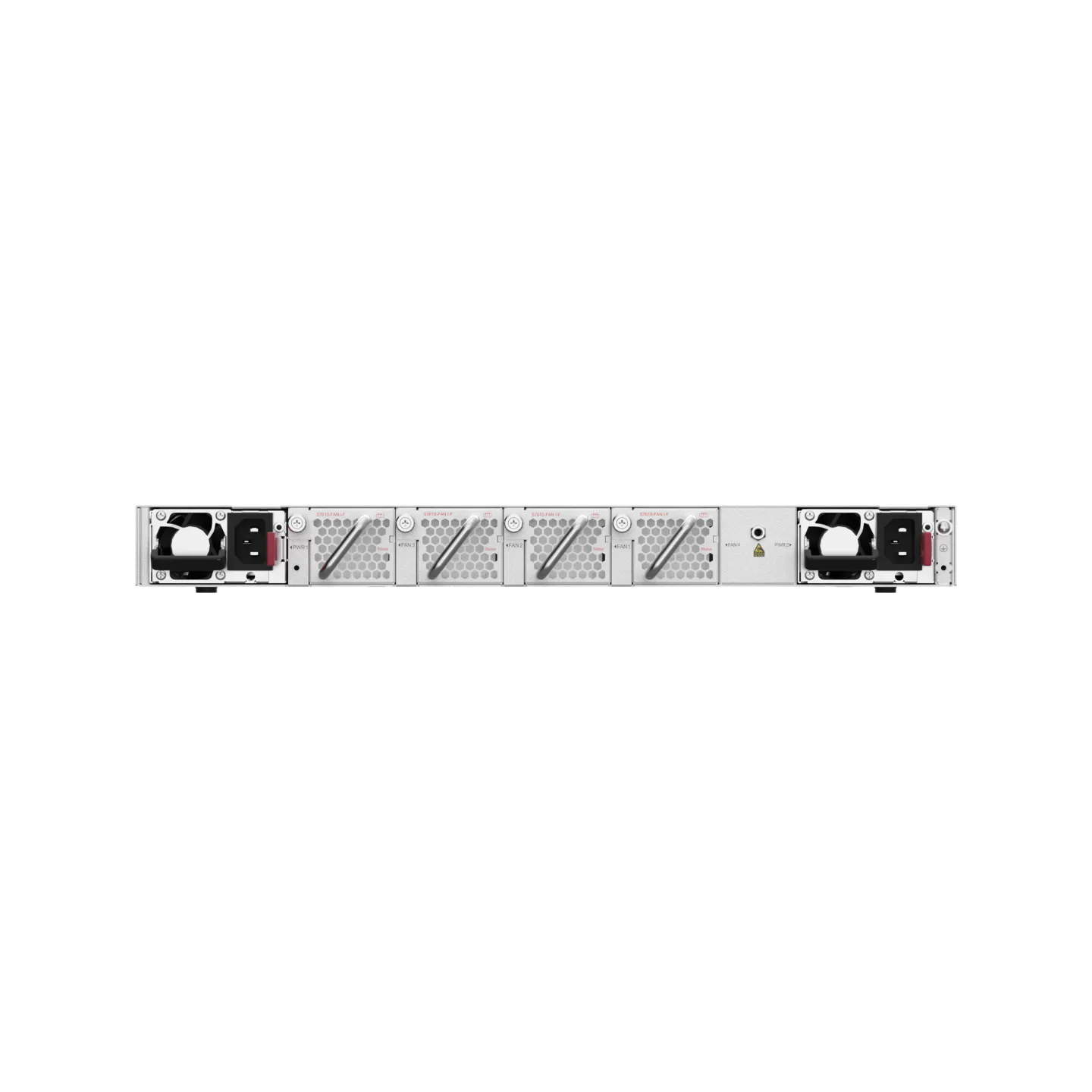| Hardware Specifications |
RG-S7610-10SFG2CQ |
RG-S7610-10SFX2CQ |
RG-S7620-20SFG2CQ |
RG-S7620-20SFX2CQ |
| Interface Specifications |
| Fixed port |
10 x SFG 1000M hyper-converged ports 2 x 100G fixed ports (100G/40G, and 4 x 25G/4 x 10G) |
10 x SFX 10G hyper-converged ports 2 x 100G fixed ports (100G/40G, and 4 x 25G/4 x 10G) |
20 x SFG 1000M hyper-converged ports 2 x 100G fixed ports (100G/40G, and 4 x 25G/4 x 10G) |
20 x SFX 10G hyper-converged ports 2 x 100G fixed ports (100G/40G, and 4 x 25G/4 x 10G) |
| Fan module slot |
4 x fan module slots (3+1 redundancy, at least three fan modules configured) |
4 x fan module slots (3+1 redundancy, at least three fan modules configured) |
3 x fan module slots (2+1 redundancy, at least two fan modules configured) |
3 x fan module slots (2+1 redundancy, at least two fan modules configured) |
| Power module slot |
2 (1+1 redundancy) |
2 (1+1 redundancy) |
2 (1+1 redundancy) |
2 (1+1 redundancy) |
| Fixed management port |
1 x console port, 1 x MGMT port, and 1 x USB 2.0 port |
1 x console port, 1 x MGMT port, and 1 x USB 2.0 port |
1 x console port, 1 x MGMT port, and 1 x USB 2.0 port |
1 x console port, 1 x MGMT port, and 1 x USB 2.0 port |
| System Specifications |
| Packet forwarding rate |
714 Mpps |
1786 Mpps |
833 Mpps |
2976 Mpps |
| System switching capacity |
960 Gbps |
2.4 Tbps |
1.12 Tbps |
4 Tbps |
| Number of MAC addresses |
128,000 |
128,000 |
128,000 |
128,000 |
| ARP table size |
96,000 |
96,000 |
96,000 |
96,000 |
| Number of IPv4 unicast routes |
350,000 (shared with IPv6 routing) |
350,000 (shared with IPv6 routing) |
350,000 (shared with IPv6 routing) |
350,000 (shared with IPv6 routing) |
| Number of IPv4 multicast routes |
4000 |
4,000 |
4,000 |
4,000 |
| Number of IPv6 unicast routes |
65,000 |
65,000 |
65,000 |
65,000 |
| Number of IPv6 multicast routes |
2,000 |
2,000 |
2,000 |
2,000 |
| Number of ACEs |
Ingress: 28,000 Egress: 4,000 |
| Number of VSU members |
4 |
| Expansion module type and slot |
M7600-2CQ (100G/40G, and 4 x 25G/4 x 10G) M7600-4GT4VS (optical port supporting 25G/10Gbase-R and 1000base-X) 1 x expansion module slot |
M7600-2CQ (100G/40G, and 4 x 25G/4 x 10G) M7600-4GT4VS (optical port supporting 25G/10Gbase-R and 1000base-X) 1 x expansion module slot |
M7600-2CQ (100G/40G, and 4 x 25G/4 x 10G) M7600-4GT4VS (optical port supporting 25G/10Gbase-R and 1000base-X) 1 x expansion module slot |
M7600-2CQ (100G/40G, and 4 x 25G/4 x 10G) M7600-4GT4VS (optical port supporting 25G/10Gbase-R and 1000base-X) 1 x expansion module slot |
| Dimensions and Weight |
| Dimensions (W x D x H) |
442 mm x 388 mm x 44 mm (17.40 in. x 15.28 in. x 1.73 in.), 1 RU |
442 mm x 388 mm x 44 mm (17.40 in. x 15.28 in. x 1.73 in.), 1 RU |
442 mm x 388 mm x 88 mm (17.40 in. x 15.28 in. x 3.46 in.), 2 RU |
442 mm x 388 mm x 88 mm (17.40 in. x 15.28 in. x 3.46 in.), 2 RU |
| Weight (full configuration) |
10 kg (including four fan modules and two power modules) |
10 kg (including four fan modules and two power modules) |
10.4 kg (excluding packaging, power modules, and expansion modules) |
10.4 kg (excluding packaging, power modules, and expansion modules) |
| CPU and Memory |
| CPU |
2.2 GHz quad-core processor |
2.2 GHz quad-core processor |
2.2 GHz quad-core processor |
2.2 GHz quad-core processor |
| Memory and storage |
SDRAM: DDR4 4 GB (compatibility with 8 GB) Flash memory: 16 GB BootROM: 16 MB |
SDRAM: DDR4 4 GB (compatibility with 8 GB) Flash memory: 16 GB BootROM: 16 MB |
SDRAM: DDR4 4 GB (compatibility with 8 GB) Flash memory: 16 GB BootROM: 16 MB |
SDRAM: DDR4 4 GB (compatibility with 8 GB) Flash memory: 16 GB BootROM: 16 MB |
| Power and Consumption |
| Maximum power consumption |
< 300 W |
< 300 W |
< 450 W |
< 450 W |
| Maximum output power |
RG-PA550I II-F: 550 W |
| Rated input voltage |
RG-PA550I II-F: AC input: 100 V AC to 240 V AC; 50/60 Hz HVDC input: 240 V DC |
| Maximum input voltage |
RG-PA550I II-F: AC input: 90 V AC to 264 V AC; 47/63 Hz HVDC input: 192 V DC to 288 V DC |
| Environment and Reliability |
| MTBF |
> 200,000 hours |
| Heat dissipation |
Front-to-rear airflow |
| Operating temperature |
0°C to 45°C (32°F to 113°F) |
| Storage temperature |
–40°C to +70°C (–40°F to +158°F) |
| Operating humidity |
10% to 90% RH (non-condensing) |
| Storage humidity |
5% to 90% RH (non-condensing) |
| Operating altitude |
0 m to 1,800 m (0 ft. to 5905.51 ft.) |
| Operating noise |
< 50 dB (closed space)/78 dB (open space) |
| Interface surge protection |
Communication port: 4 kV on the MGMT port |

